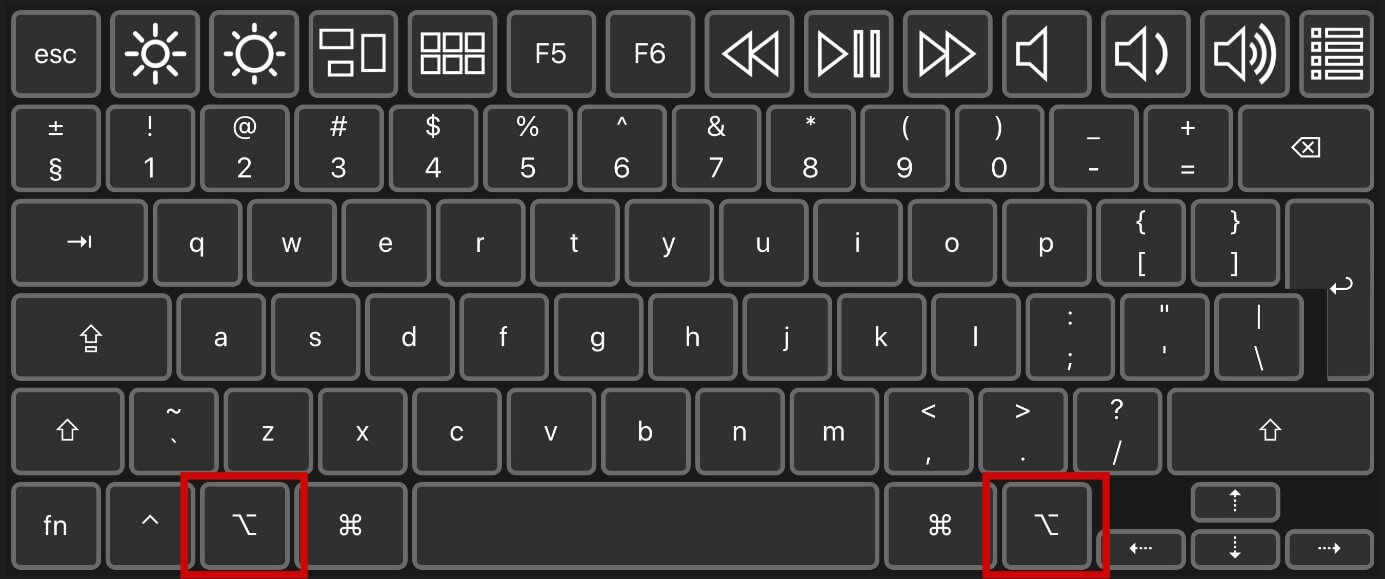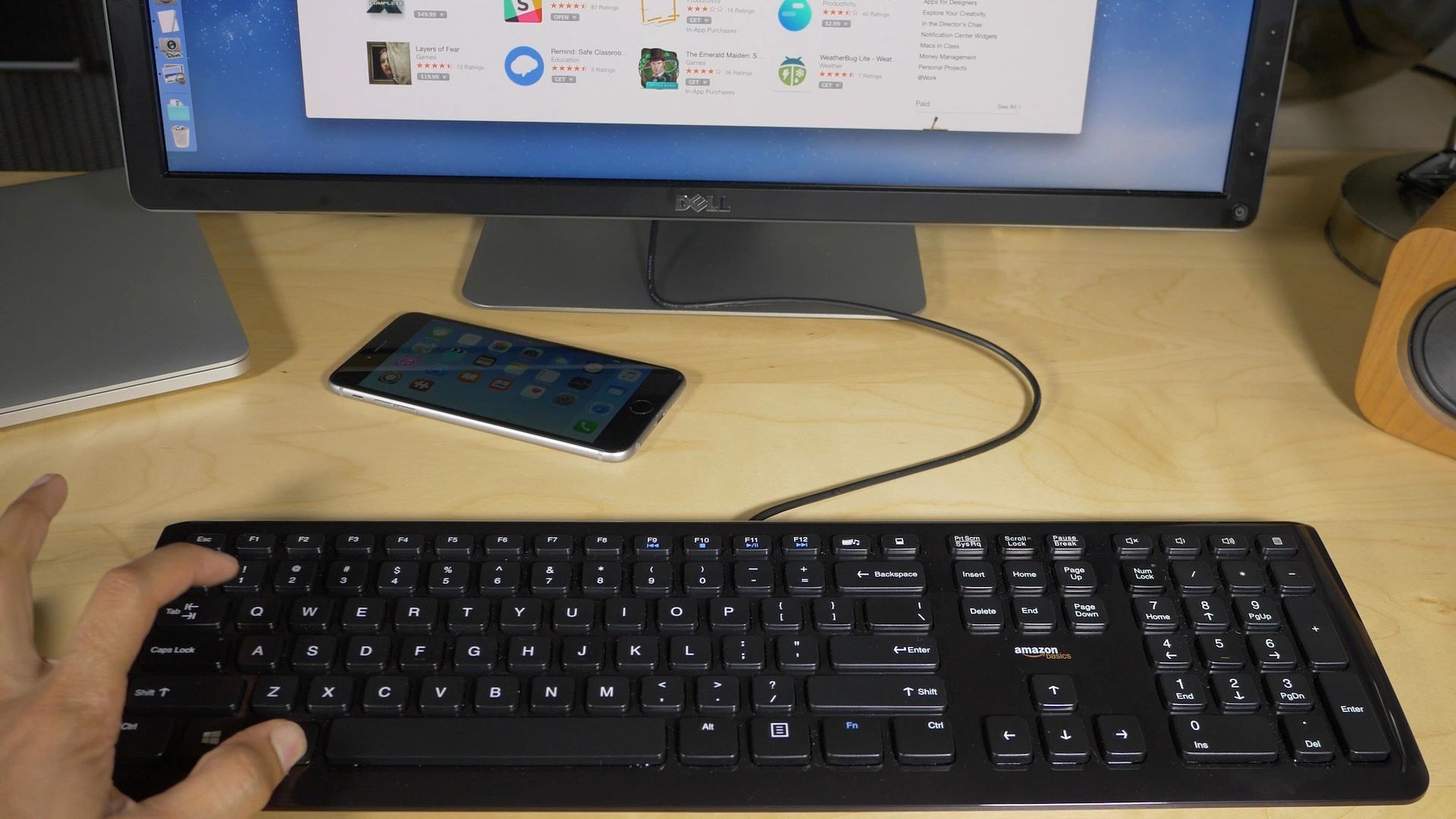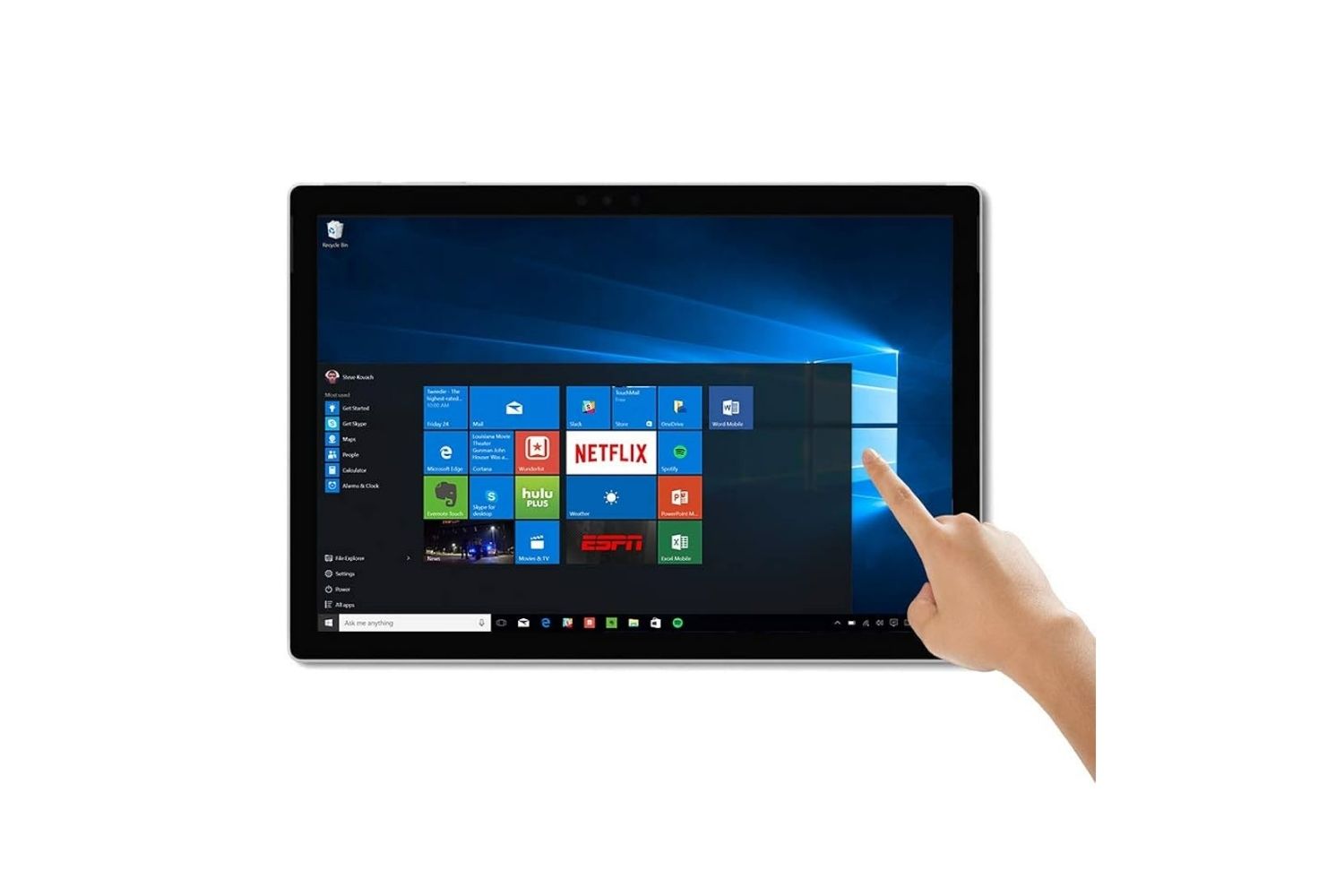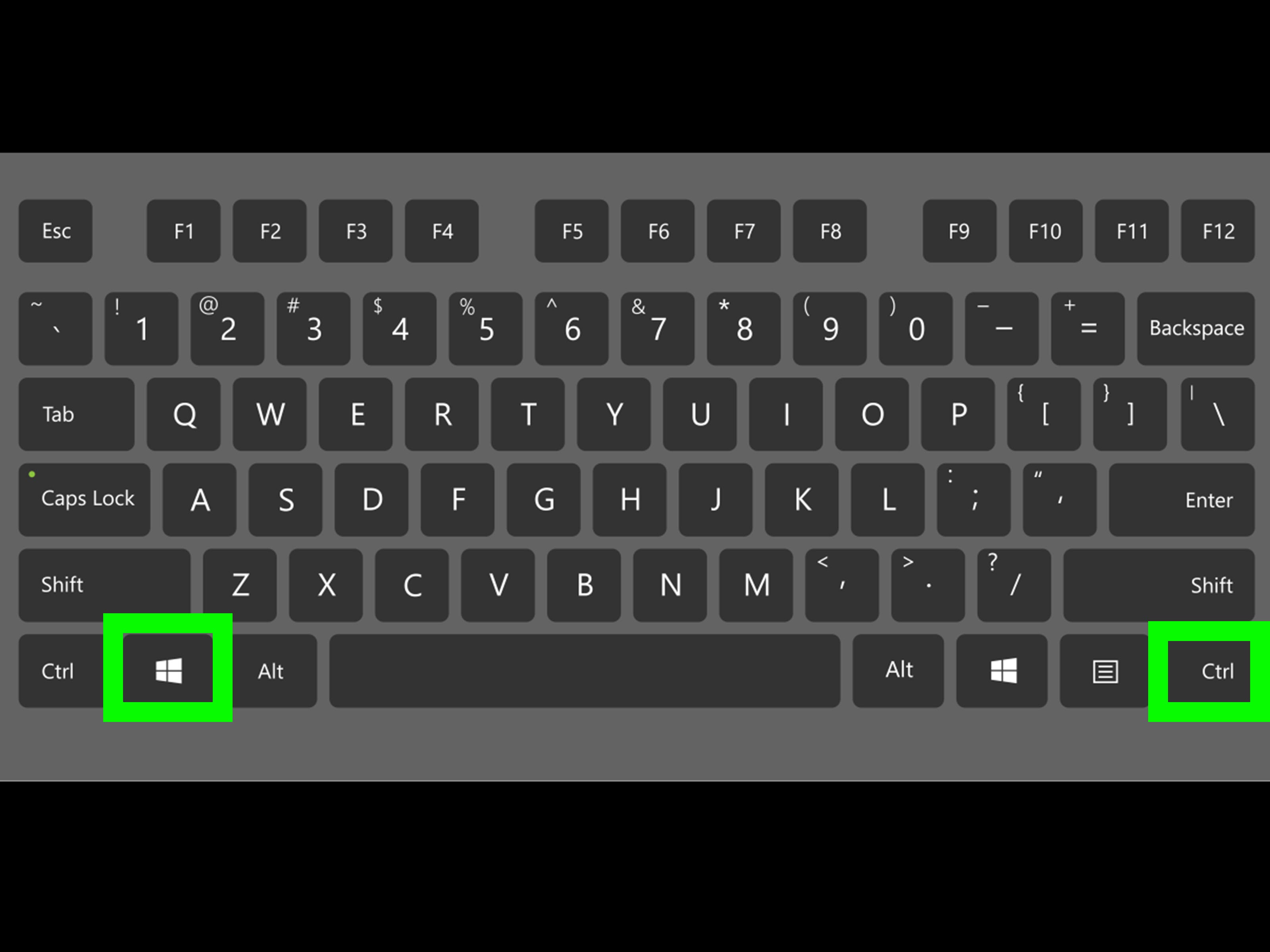Introduction
The option key, also known as the alt key, is a prominent feature on Windows keyboards. While it is commonly associated with Mac computers, many people may not realize that the option key exists on Windows keyboards as well. So, what exactly is the option key and what does it do?
The option key is a modifier key found on both Mac and Windows keyboards. It is positioned next to the command key on Mac keyboards and beside the control key on Windows keyboards. When pressed in combination with other keys, it allows for a range of special functions and shortcuts.
In this article, we will explore the various features and functions of the option key on a Windows keyboard. We will delve into its history, different names it is known by, and the ways in which it can enhance your computing experience. Whether you are a beginner or an experienced user, understanding the power of the option key can significantly improve your productivity and efficiency while using your Windows machine.
So, whether you are curious about the origin of the option key or interested in discovering new shortcuts, keep reading to unlock the hidden potential of this often overlooked key.
Let’s dive into the fascinating world of the option key and explore its many uses on a Windows keyboard.
What is the Option key?
The Option key, also known as the Alt key, is a modifier key found on both Mac and Windows keyboards. It is denoted by the “⌥” symbol on Mac keyboards and the “Alt” label on Windows keyboards. The key is positioned next to the Command key on Mac keyboards and next to the Control key on Windows keyboards.
The Option key acts as a modifier, meaning it alters the functions of other keys when pressed in combination with them. It allows users to access a variety of special characters, symbols, and shortcuts that are not easily accessible through the standard keyboard layout.
On a Mac keyboard, the Option key is primarily used to access special characters and diacritical marks. For example, pressing the Option key along with another key allows you to type the symbol for the copyright ©, the trademark ™, or the registered trademark ®. It also enables you to type accented characters commonly used in foreign languages.
On a Windows keyboard, the Alt key serves a similar purpose. It enables users to access special characters and symbols by entering their corresponding ASCII codes. For example, pressing Alt + 0153 allows you to insert the trademark symbol ™, while Alt + 0169 inserts the copyright symbol ©. The Alt key is also used in various keyboard shortcuts to navigate menus and perform common functions.
The Option key or Alt key is a versatile tool that expands the capabilities of your keyboard. It provides quick access to various characters and symbols, enhancing your ability to communicate and express yourself effectively. Understanding how to use the Option key unlocks a wealth of hidden features and shortcuts that can significantly streamline your workflow.
In the next section, we will delve into the history of the Option key, exploring the origins and evolution of this essential keyboard component.
Stay tuned to uncover the fascinating history behind the Option key and how it has evolved over time.
The History of the Option Key
The Option key, also known as the Alt key on Windows keyboards, has an interesting history that dates back to the early days of personal computers.
The concept of the Option key can be traced back to the Apple Lisa, one of the first commercial computers developed by Apple Inc. The Lisa, released in 1983, featured a unique keyboard layout that included a key labeled “Option”. This key was designed to provide users with additional functionality beyond what could be achieved with the standard keys.
When the Macintosh, Apple’s iconic computer, was introduced in 1984, it also included the Option key. The Macintosh used a modified version of the Lisa’s keyboard layout, and the Option key retained its place. It quickly became an integral part of the Macintosh user experience, allowing users to access special characters and perform various shortcuts.
On Windows keyboards, the Alt key was introduced as a counterpart to the Option key. The Alt key stands for “alternate” and serves a similar purpose – providing additional functionality when used in combination with other keys. While the Alt key’s design and placement may vary slightly among different keyboards, its core function remains the same across all Windows machines.
Over the years, both the Option key on Mac keyboards and the Alt key on Windows keyboards have evolved to accommodate changing user needs. With the rise of graphical user interfaces and the increasing complexity of software applications, the functionality of these keys expanded to include shortcuts for navigation, application switching, and window management.
Today, the Option key and the Alt key continue to be essential components of any keyboard, offering users a wide range of functions and shortcuts. From accessing special characters to navigating menus and performing advanced commands, these keys have become indispensable tools for computer users worldwide.
In the next section, we will explore the different names used to refer to the Option key and Alt key, showcasing the variation in terminology across different keyboard layouts.
Continue reading to learn about the various names for the Option key and Alt key and how they are understood in different contexts.
Different Names for the Option Key
While the Option key and the Alt key are the most common names used to refer to these modifier keys, different keyboard layouts and operating systems may use alternative names to describe them. Let’s explore some of the variations in terminology.
1. Option Key: This is the name commonly used on Apple keyboards, particularly those designed for Macintosh computers. The key is labeled with the “⌥” symbol and is positioned next to the Command key. It is often referred to as the Option key because it provides additional options and choices when used in combination with other keys.
2. Alt Key: On Windows keyboards, the equivalent key is labeled as the Alt key. It is short for “alternate” and serves a similar purpose to the Option key on Mac keyboards. The Alt key is positioned next to the Control key and is often used to access alternate functions and shortcuts.
3. Meta Key: In some Linux distributions, the key equivalent to the Option and Alt keys may be referred to as the Meta key. This originated from the use of the key as a modifier for metadata commands.
4. Command Key: The Command key is another term used to describe the Option key on Mac keyboards. It is denoted by the “⌘” symbol and is commonly used in combination with other keys to execute commands and shortcuts.
5. Super Key: Some keyboards, particularly those used with Linux systems, have a key labeled as the Super key. This key serves a similar purpose to the Command key on Mac keyboards and the Windows key on Windows keyboards.
These are just a few examples of the different names used for the Option key and Alt key in different contexts. The names may vary based on the keyboard layout, operating system, and personal preferences.
Regardless of the name, these keys play a vital role in enhancing productivity and efficiency by providing quick access to special characters, shortcuts, and advanced functions.
In the next section, we will explore the wide variety of functions and capabilities of the Option key on a Windows keyboard. Stay tuned to discover the power of this versatile modifier key.
What does the Option key do?
The Option key, also known as the Alt key on Windows keyboards, serves a range of functions and has numerous capabilities that can enhance your computing experience. Let’s explore the various ways in which the Option key can be used on a Windows keyboard.
1. Accessing special characters and symbols: One of the primary functions of the Option key is to allow users to enter special characters and symbols that are not readily available on the standard keyboard layout. By pressing the Option key in combination with other keys, you can type symbols like ©, ™, and ®, as well as accented characters used in foreign languages.
2. Creating keyboard shortcuts: The Option key can be utilized to create keyboard shortcuts for common functions and actions. By assigning specific commands or actions to a combination of keys that include the Option key, you can quickly execute tasks without the need to navigate through menus or use the mouse.
3. Switching between open applications: Pressing the Option key along with the Tab key enables you to switch between your currently open applications. This shortcut, known as the “Alt-Tab” or “Command-Tab” shortcut on a Mac, allows for easy multitasking and quick navigation between different programs.
4. Performing system-level functions: The Option key can be used in combination with other keys to perform system-level functions. For example, pressing Option-Shift-Volume Up or Volume Down adjusts the volume in smaller increments compared to the standard volume keys. Additionally, holding down the Option key during startup allows you to access the boot menu, where you can choose different startup options.
5. Customizing software applications: Many software applications allow you to define custom shortcuts using the Option key. By navigating to the software’s preferences or settings, you can assign specific actions or functions to key combinations that include the Option key, tailoring the software to your workflow and boosting your productivity.
These are just a few examples of the capabilities of the Option key on a Windows keyboard. The precise functions and shortcuts may vary depending on the operating system and the software applications you are using.
In the next section, we will explore how to effectively use the Option key on a Windows keyboard, including some commonly used functions and shortcuts. Keep reading to uncover the full potential of this versatile modifier key.
How to use the Option key on a Windows keyboard
The Option key, also known as the Alt key on Windows keyboards, offers a plethora of functions and shortcuts to enhance your productivity on a Windows machine. Here are some ways to effectively use the Option key on a Windows keyboard:
1. Typing special characters: To type special characters and symbols, hold down the Option key and press the corresponding key on the keyboard. For example, to type the copyright symbol ©, press Option + G. You can refer to the ASCII codes chart or use character map utilities to find the codes for other symbols and characters.
2. Accessing menus and navigation: Holding down the Option key while clicking on a menu item often reveals additional options or alternative actions. This feature is especially useful in software applications that offer hidden functions or advanced settings. Similarly, pressing Option + Tab allows you to switch between open windows or applications, providing efficient multitasking.
3. Creating custom shortcuts: Many software applications allow you to create custom keyboard shortcuts using the Option key. This can be helpful for frequently used commands that may not have default shortcuts. Check the preferences or settings menu of your software to assign personalized shortcuts that include the Option key.
4. Zooming and screen enhancements: In some applications or web browsers, holding down the Option key while scrolling the mouse wheel or trackpad zooms in or out on the screen. This functionality is particularly useful for viewing webpages or documents with finer details.
5. System-level functions: The Option key can be used for various system-level functions. For example, pressing Option + Shift + Volume Up or Volume Down adjusts the volume in smaller increments. Holding down the Option key during startup allows you to access the boot menu, where you can choose different startup options or boot from external devices.
By familiarizing yourself with these techniques, you can effectively harness the power of the Option key on a Windows keyboard. Experiment with different software applications and explore their unique functionality and shortcuts.
In the next section, we will uncover some commonly used functions and shortcuts that involve the Option key on a Windows keyboard. Stay tuned to further enhance your productivity and efficiency.
Common Functions and Shortcuts Using the Option Key
The Option key, also known as the Alt key on Windows keyboards, provides a wide range of functions and shortcuts that can significantly enhance your workflow and productivity. Here are some of the most commonly used functions and shortcuts involving the Option key on a Windows keyboard:
1. Option + Shift + Volume Up/Volume Down: Adjusts the volume in smaller increments compared to the standard volume keys. This can be helpful when you want more precise control over the audio levels.
2. Option + Click: Allows you to open links in a new tab or new window, depending on your browser settings. This is a convenient way to navigate between multiple webpages without losing your current location.
3. Option + Delete: Deletes the previous word instead of the previous character when editing text. This shortcut saves time and effort when making corrections or revisions.
4. Option + Drag-and-drop: In some applications, holding down the Option key while dragging and dropping files or folders duplicates the items instead of moving them. This is useful when you want to create identical copies or backups of files.
5. Option + Command + Esc: Opens the Force Quit Applications window, which allows you to quickly close unresponsive or problematic applications. This shortcut is especially handy when encountering software freezes or crashes.
6. Option + Shift + Delete: Deletes files immediately instead of moving them to the Recycle Bin or Trash. Exercise caution when using this shortcut, as it bypasses the usual safety net of file recovery.
7. Option + Tab: Switches between open applications in the reverse order. This is useful when you want to quickly toggle between the two most recently used applications.
8. Option + Spacebar: Opens the Spotlight search bar, enabling you to search for files, folders, applications, and more on your Windows machine. This shortcut is a convenient way to locate specific items quickly.
These are just a few examples of the many functions and shortcuts that involve the Option key on a Windows keyboard. The specific shortcuts may vary depending on the operating system version, software applications, and personal customizations.
By mastering these commonly used functions and shortcuts, you can streamline your workflow and navigate your Windows environment with ease.
In the next section, we will explore how to customize the Option key on a Windows keyboard, allowing you to tailor it to your specific needs and preferences.
Customizing the Option Key on Windows
Windows provides various options for customizing your keyboard settings, including the ability to modify the behavior of the Option key, also known as the Alt key. By customizing the Option key, you can tailor it to your specific needs and preferences. Here are some ways you can customize the Option key on Windows:
1. Keyboard settings: Windows allows you to modify the behavior of modifier keys, including the Option key, through the keyboard settings. To access these settings, go to the Control Panel, click on “Clock, Language, and Region,” then select “Change keyboards or other input methods.” From there, you can choose to remap the Option key or assign it a different function.
2. Third-party software: There are several third-party applications available that allow for advanced customization of your keyboard shortcuts and key functions. These applications offer more granular control over the behavior of individual keys, including the Option key. Examples of such software include SharpKeys and AutoHotkey, which give you the flexibility to remap keys to your liking.
3. Shortcut assignments: Many software applications provide options for customizing keyboard shortcuts within their settings. In these applications, you can assign specific functions or commands to key combinations that include the Option key. This allows you to create shortcuts that align with your workflow and preferences.
4. Macro scripts: If you frequently perform repetitive tasks, creating macro scripts can be a powerful way to streamline your workflow. Macro scripts are recorded sequences of actions that can be triggered by a keyboard shortcut. Using macro software like AutoHotkey, you can assign complex tasks to a combination that includes the Option key, saving you time and effort.
5. Accessibility options: Windows offers accessibility options that can be used to modify the behavior of keys for individuals with specific needs. You can adjust the Repeat Delay and Repeat Rate settings, which control how quickly a key is repeated when held down. These settings can make typing and using the Option key more comfortable.
Remember to exercise caution when making changes to your keyboard settings and use trusted software applications to avoid any unintended consequences.
By customizing the Option key on your Windows keyboard, you can create a personalized typing experience that caters to your unique preferences and requirements.
In the final section, we will summarize the key points discussed in this article and conclude our exploration of the Option key on a Windows keyboard.
Conclusion
In conclusion, the Option key, also known as the Alt key on Windows keyboards, is a versatile and powerful tool that expands the capabilities of your keyboard. It allows you to access special characters, perform shortcuts, and customize your computing experience on a Windows machine.
Throughout this article, we have explored the various aspects of the Option key. We learned what the Option key is, its history, and the different names it is known by across different keyboard layouts and operating systems. We also delved into the functions and shortcuts that can be performed using the Option key, as well as how to customize it to suit your specific needs.
Understanding how to use the Option key effectively can greatly enhance your productivity and efficiency. It allows you to type special characters, navigate menus, perform system-level functions, and create custom shortcuts. By customizing the Option key, you can tailor it to your preferences and optimize your workflow.
Whether you are a novice or an experienced user, exploring the capabilities of the Option key opens up a whole new world of possibilities. By mastering its functions and shortcuts, you can streamline your tasks, save time, and work more efficiently on your Windows machine.
So, the next time you sit down to use your Windows keyboard, remember the power that lies in the Option key. Experiment with its various functions and explore the software applications you use to uncover hidden features and shortcuts.
Harness the potential of the Option key and take your Windows computing experience to new heights.
(Note: Remember to verify your HTML code to ensure valid encoding.)

























